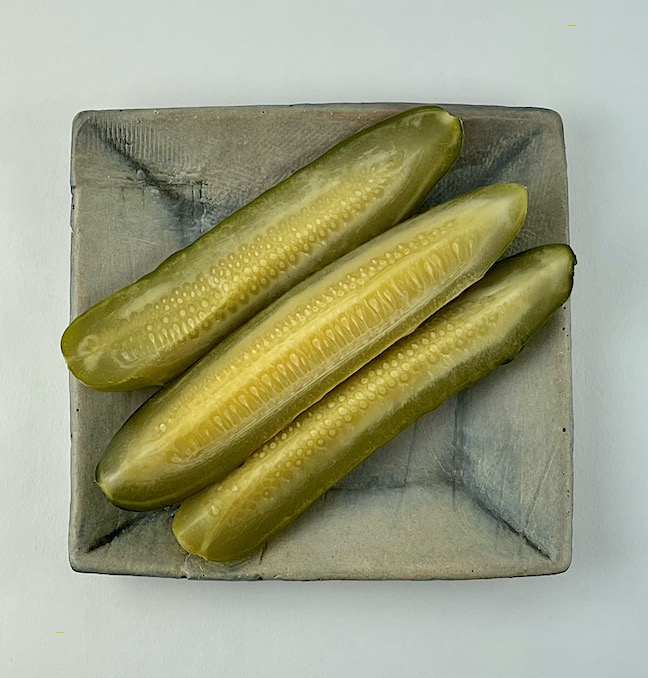
Stoneware plate by Mary Barringer
Two potters I like and respect, Liz Quackenbush and Doug Peltzman, recently posted similar recipes for lacto-fermented pickles. Liz uses a combination of salt and vinegar and Doug just salt. Last year, I posted a recipe for vinegar pickles and enjoyed those well into the winter but in Doug’s recipe, the cukes are cured with salt water and delicious but are not for long term storage. I gave them a try. Lacto-fermentation is the process of good bacteria eating and converting sugars into lactic acid, similar to sourdough, yogurt, kombucha, kimchi or sauerkraut (also very easy to make with just cabbage and salt). Food becomes easier to digest and has healthy benefits (good bacteria in our guts is a positive thing) as a result of this process.
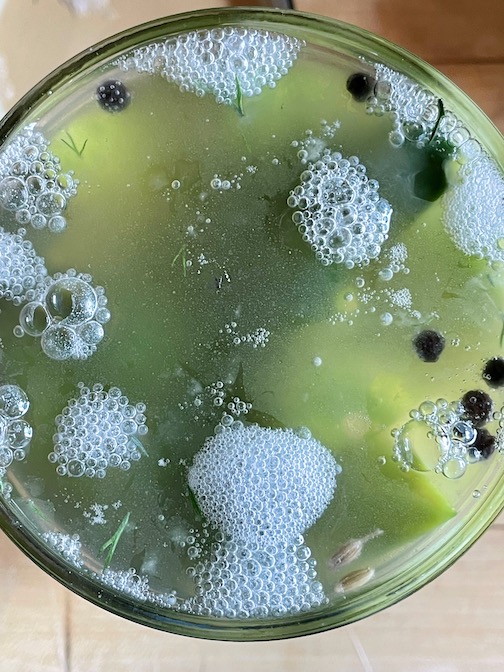
I thought making pickles with vinegar was easy but with salt it is even simpler. Just dissolve the salt in water, add herbs, garlic and spices and your cucumbers (whole or cut). Then you cover and wait a few days until the pickling magic happens. You can use a crock (Peltzman makes some beauties especially designed for this process, with a water lock—the gallery/shelf where the lid sits has a little depression for water—so gas produced by fermentation can escape) or just clean glass jars. I’ve found other potters making crocks (including (Krista Cortese, Gwendolyn Yoppolo, Miki Palchick, Daniel Bellow to name a few) but there are many making wonderful big jars or lidded bowls which work, too, if you crack the lid to let the gas that is formed by fermentation to escape.

Photo courtesy of the artist

Photo courtesy of the artist
You can pickle other vegetables, like carrots, green beans and green tomatoes this way. If I make more pickles I will have to learn to use a water bath to preserve them into the winter without refrigeration but, honestly, it is not likely I will be willing to go through that hot processing, since we are eating them so quickly. For now, we will be happily munching pickles from the fridge, using them in salmon and sardine salads and putting them on burgers of all kinds. Next time I may have to use a half-gallon jar… Thanks to Doug and Liz for the inspiration and guidance.
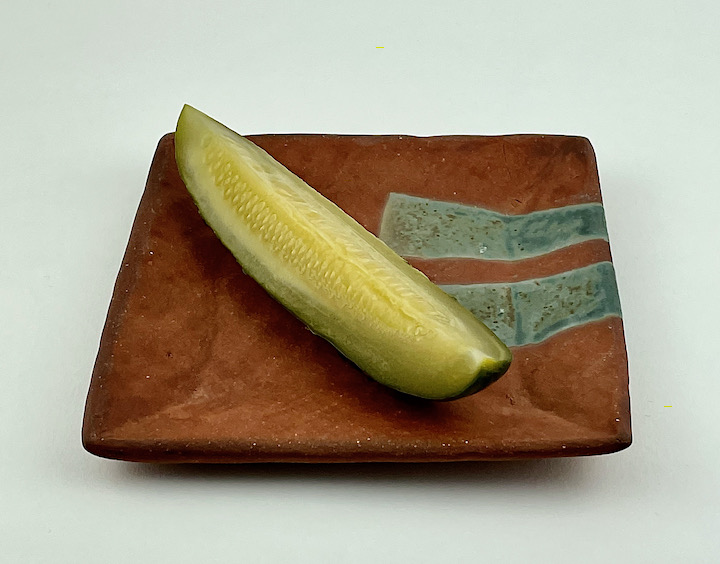
Plate by Mary Barringer
PICKLES (from Doug Peltzman)
- 1 clean quart glass jar with non-reactive lid
- 1 quart water
- 2 1/2 TBs salt (I used Diamond Crystal kosher)
- 1/2-1 TBs black peppercorns
- 1-2 bay leaves
- 2 crushed garlic cloves
- Small handful of fresh dill, with flowers if available
- Enough fresh pickling cucumbers (like Kirby) to fill your jar, whole or in half or quartered spears
- Optional – mustard seeds, allspice or coriander berries, red pepper flakes
Pack jar tightly with cucumbers, whole or in spears, along with dill, garlic, bay leaves, peppercorns and whatever other spices you choose
Mix salt into water and stir until dissolved.
Pour into packed jar to completely cover pickles.
Let sit out uncovered (I used a layer of cheesecloth draped on top to keep out flies, etc.) 2-3 days until brine is bubbly and cucumbers have started to yellow or darken from bright green and look like pickles. Cover tightly and refrigerate a few days before using. Taste to see if they are pickled enough for your preference.
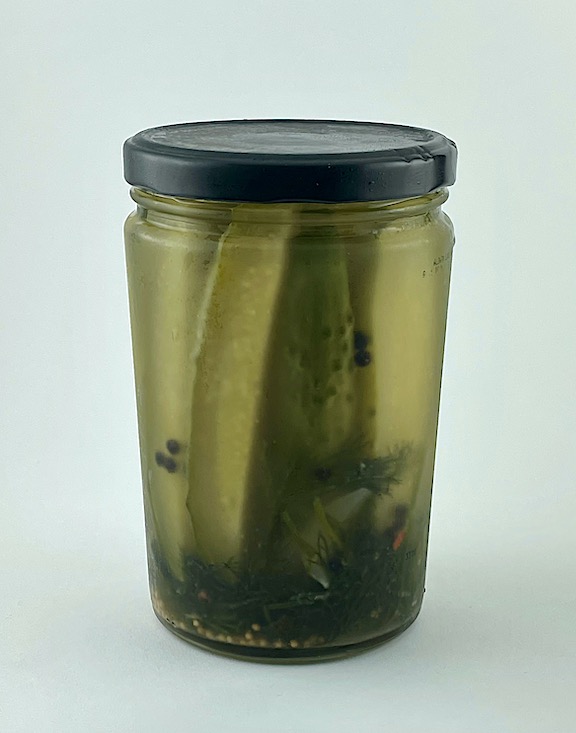
Mary Barringer makes a wide range of handbuilt stoneware pots with intriguing, painterly imagery and rich, textured surfaces. Her small plates are irresistible to me and so pleasurable to use or just look at. We have been buying and enjoying her pots for decades and I highly recommend having a look at her shop–the link is below.
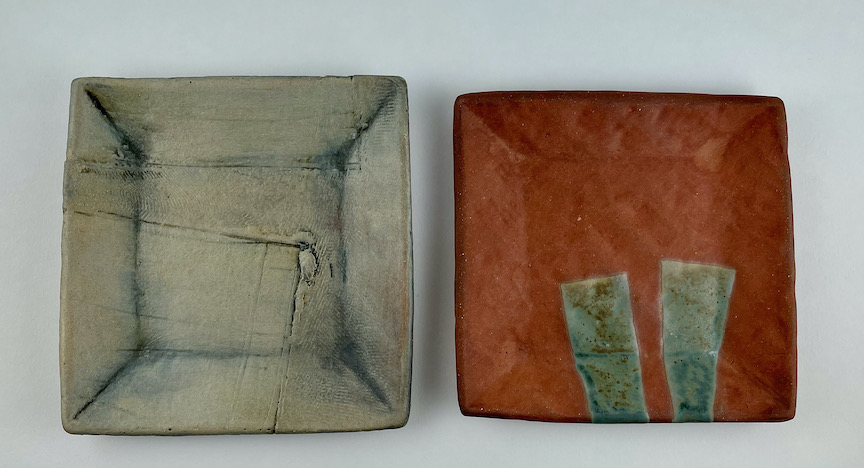
by Mary Barringer
So informative!
I try my best lol!